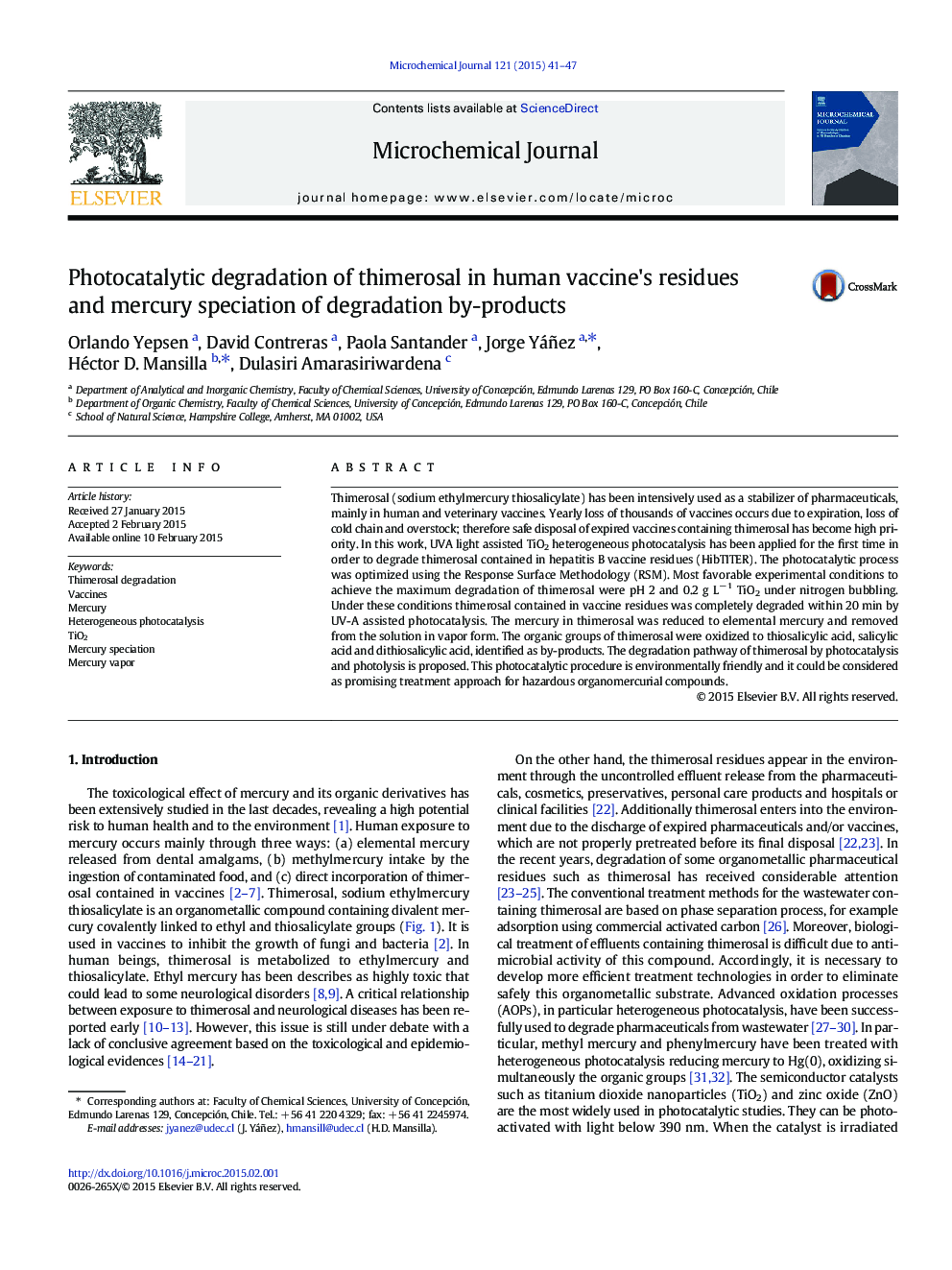| Article ID | Journal | Published Year | Pages | File Type |
|---|---|---|---|---|
| 1227680 | Microchemical Journal | 2015 | 7 Pages |
•Thimerosal was efficiently degraded by photocatalysis with TiO2 assisted by UV-A light.•Optimal conditions for thimerosal degradation were 0.2 g L− 1 TiO2 and pH 2.•Reaction by-products were identified and reaction pathway was proposed.•The mercury was reduced to Hg(0) and removed from the solution in vapor form.•Removal of thimerosal from HibTITER vaccines was carried out.
Thimerosal (sodium ethylmercury thiosalicylate) has been intensively used as a stabilizer of pharmaceuticals, mainly in human and veterinary vaccines. Yearly loss of thousands of vaccines occurs due to expiration, loss of cold chain and overstock; therefore safe disposal of expired vaccines containing thimerosal has become high priority. In this work, UVA light assisted TiO2 heterogeneous photocatalysis has been applied for the first time in order to degrade thimerosal contained in hepatitis B vaccine residues (HibTITER). The photocatalytic process was optimized using the Response Surface Methodology (RSM). Most favorable experimental conditions to achieve the maximum degradation of thimerosal were pH 2 and 0.2 g L− 1 TiO2 under nitrogen bubbling. Under these conditions thimerosal contained in vaccine residues was completely degraded within 20 min by UV-A assisted photocatalysis. The mercury in thimerosal was reduced to elemental mercury and removed from the solution in vapor form. The organic groups of thimerosal were oxidized to thiosalicylic acid, salicylic acid and dithiosalicylic acid, identified as by-products. The degradation pathway of thimerosal by photocatalysis and photolysis is proposed. This photocatalytic procedure is environmentally friendly and it could be considered as promising treatment approach for hazardous organomercurial compounds.
